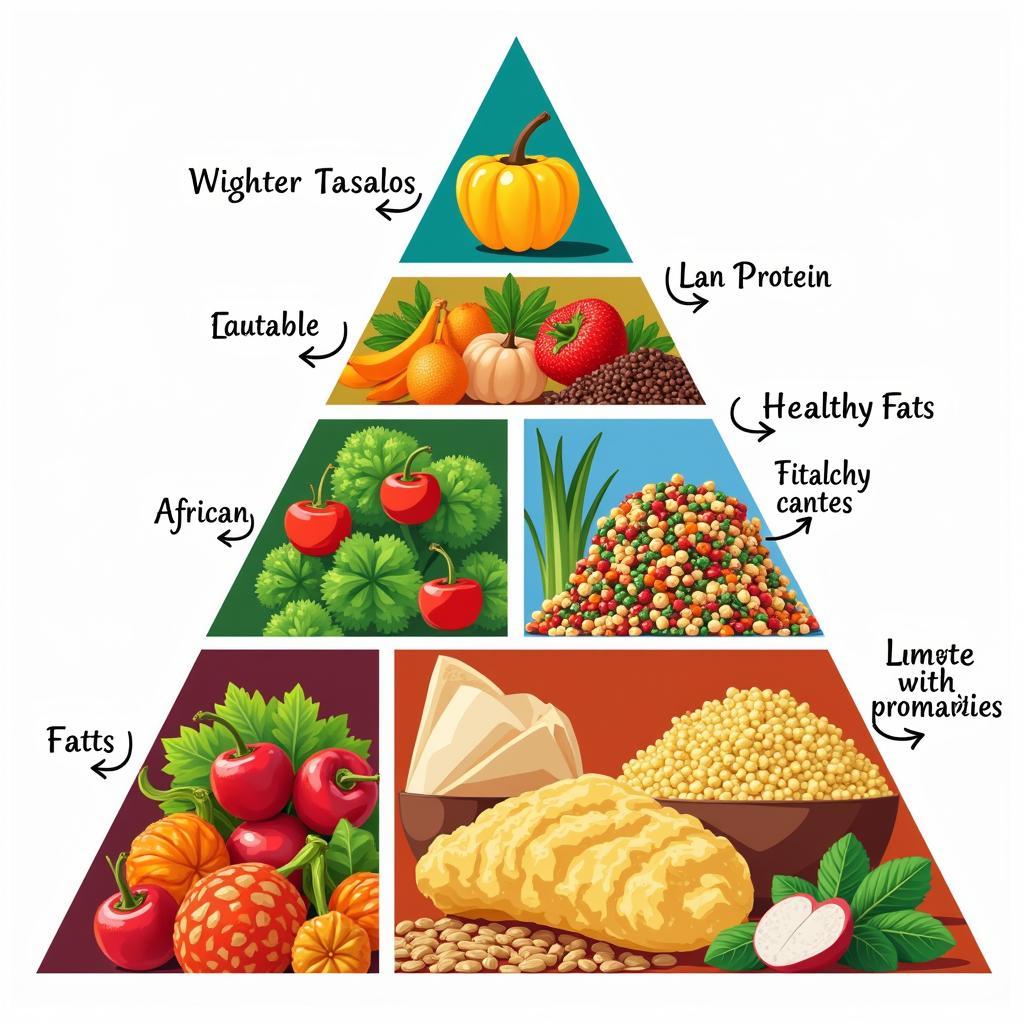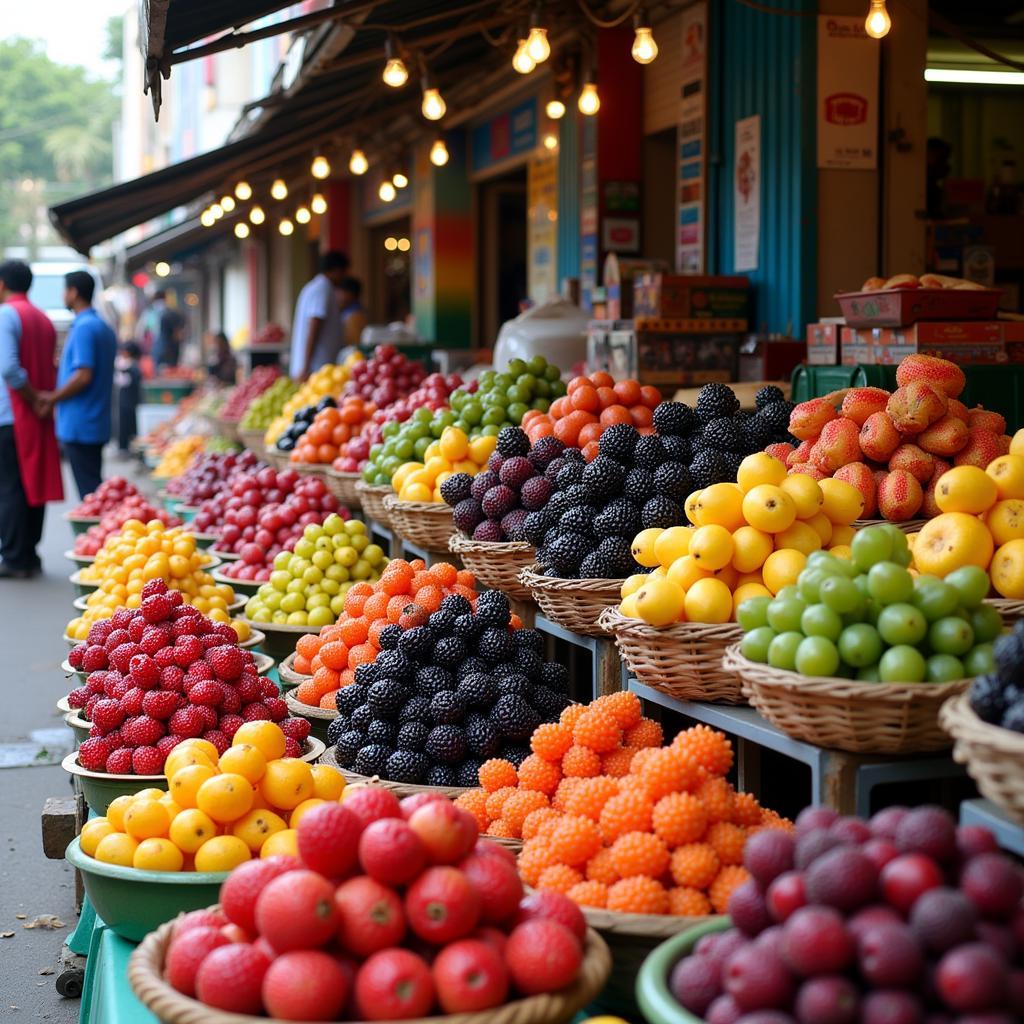The Diverse World of Acacia: African Plants with a Story to Tell
Acacia, a name that evokes images of the African savanna, encompasses a fascinating genus of trees and shrubs that are deeply intertwined with the continent’s landscapes and cultures. From the iconic umbrella-shaped acacia trees dotting the Serengeti to the thorny thickets providing refuge for wildlife, these plants are essential components of Africa’s diverse ecosystems. But acacias are much more than just scenic elements; they play a vital role in the lives of people across the continent, offering a wealth of practical uses and cultural significance.
A Closer Look at Acacia: African Plants with a Rich History
The acacia genus, belonging to the legume family, boasts over 1,300 species found worldwide, with a significant concentration in Africa. These plants exhibit remarkable adaptability, thriving in a range of habitats, from arid deserts and savannas to woodlands and grasslands. Their distinctive features, including feathery foliage, often thorny branches, and fragrant, brightly colored flowers, make them easily recognizable.
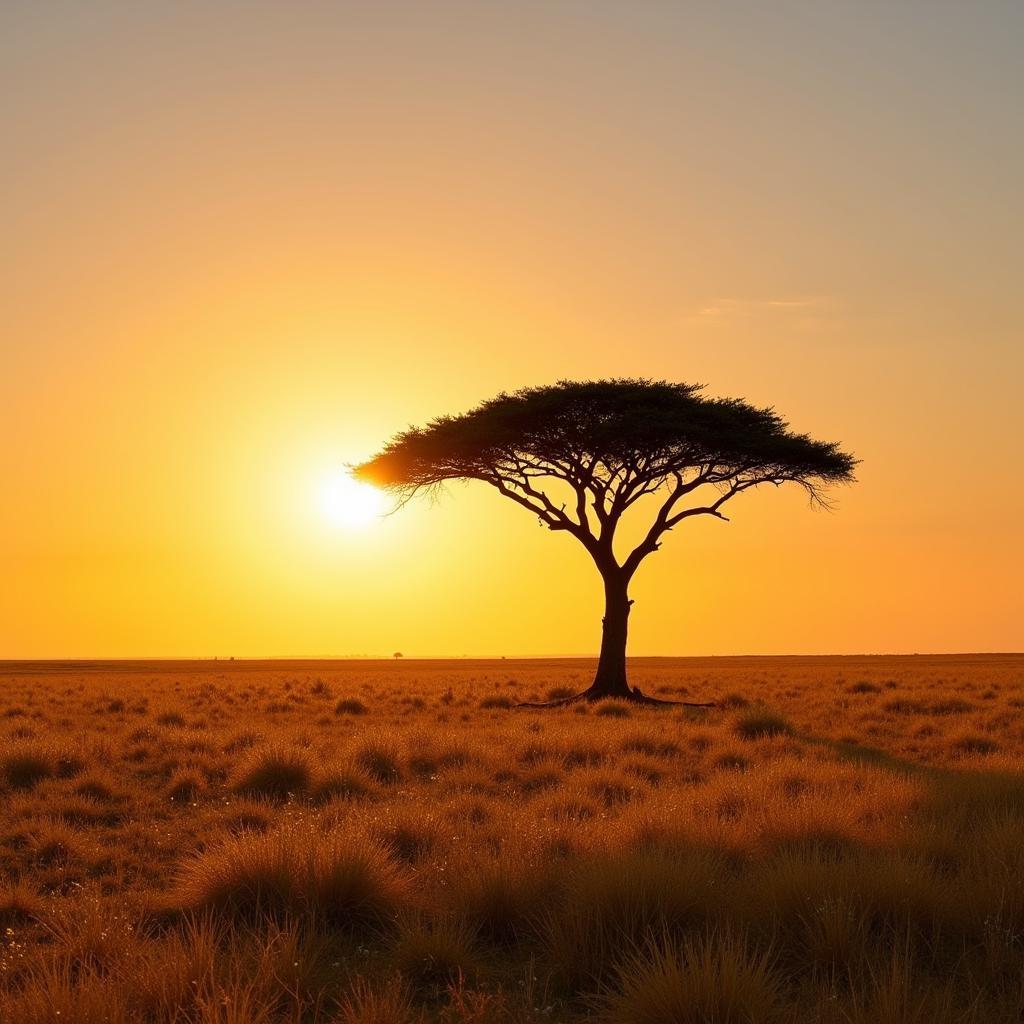 Acacia Tree on African Savanna
Acacia Tree on African Savanna
For centuries, acacia trees have held a prominent place in African cultures. Their wood, known for its strength and durability, has been used to construct everything from houses and furniture to tools and weapons. The bark of certain species yields a resinous gum, traditionally used in adhesives, inks, and even food. Moreover, acacia leaves and pods provide valuable fodder for livestock, while their flowers attract pollinators like bees, contributing to the ecological balance.
Exploring the Many Uses of Acacia: African Plants with Practical Applications
The versatility of acacias extends beyond their ecological significance. Traditional African medicine relies heavily on various parts of these plants for their therapeutic properties. Extracts from bark, leaves, and roots are used to treat a wide array of ailments, from skin infections and digestive problems to respiratory issues and inflammatory conditions.
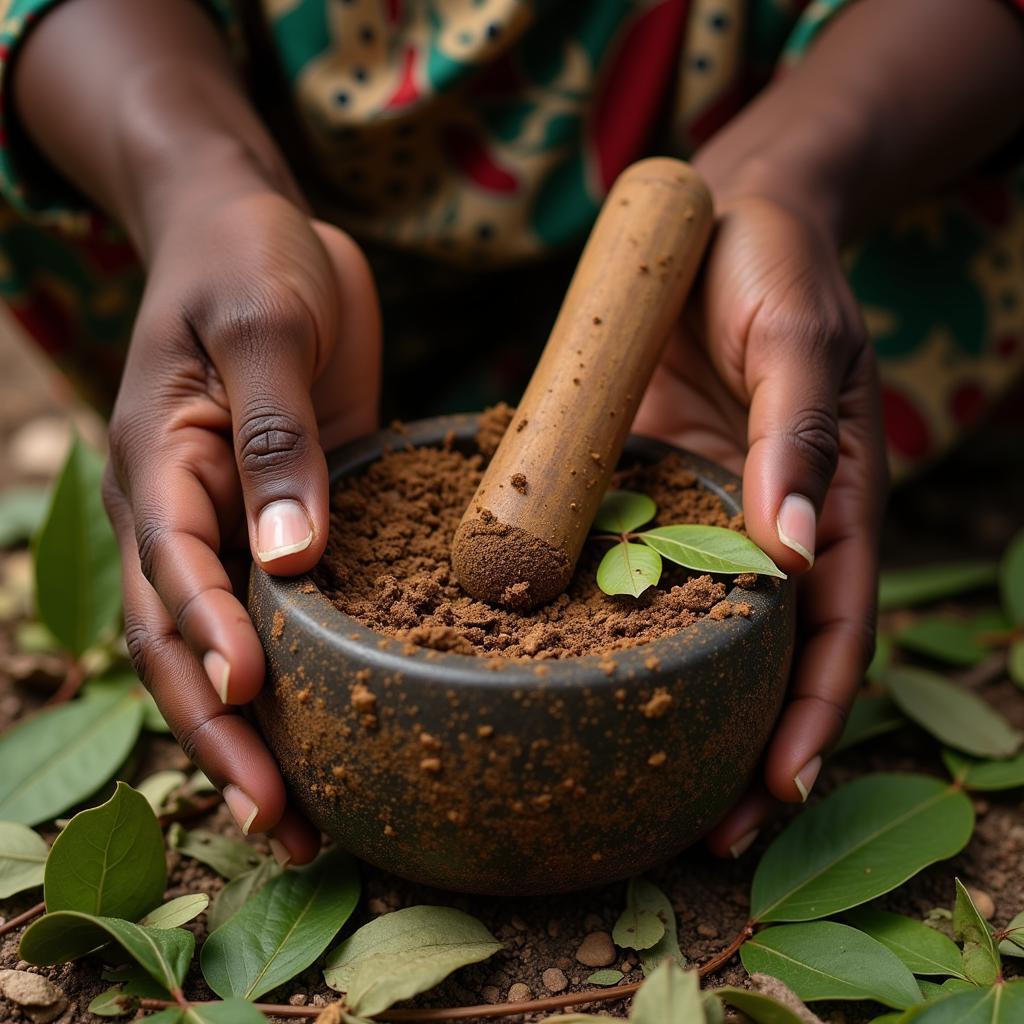 Traditional Healer Preparing Acacia Remedy
Traditional Healer Preparing Acacia Remedy
Furthermore, acacias contribute significantly to local economies. The gum arabic trade, for instance, provides livelihoods for communities across the Sahel region. This natural gum, derived from certain acacia species, finds application in various industries globally, including food processing, pharmaceuticals, and cosmetics.
Acacia in a Changing World: Challenges and Conservation Efforts
Despite their resilience, acacias face growing threats in modern times. Climate change, habitat loss due to deforestation and agriculture, and the introduction of invasive species pose significant challenges to their survival. Recognizing these threats, conservation efforts are underway to protect and manage acacia populations across Africa.
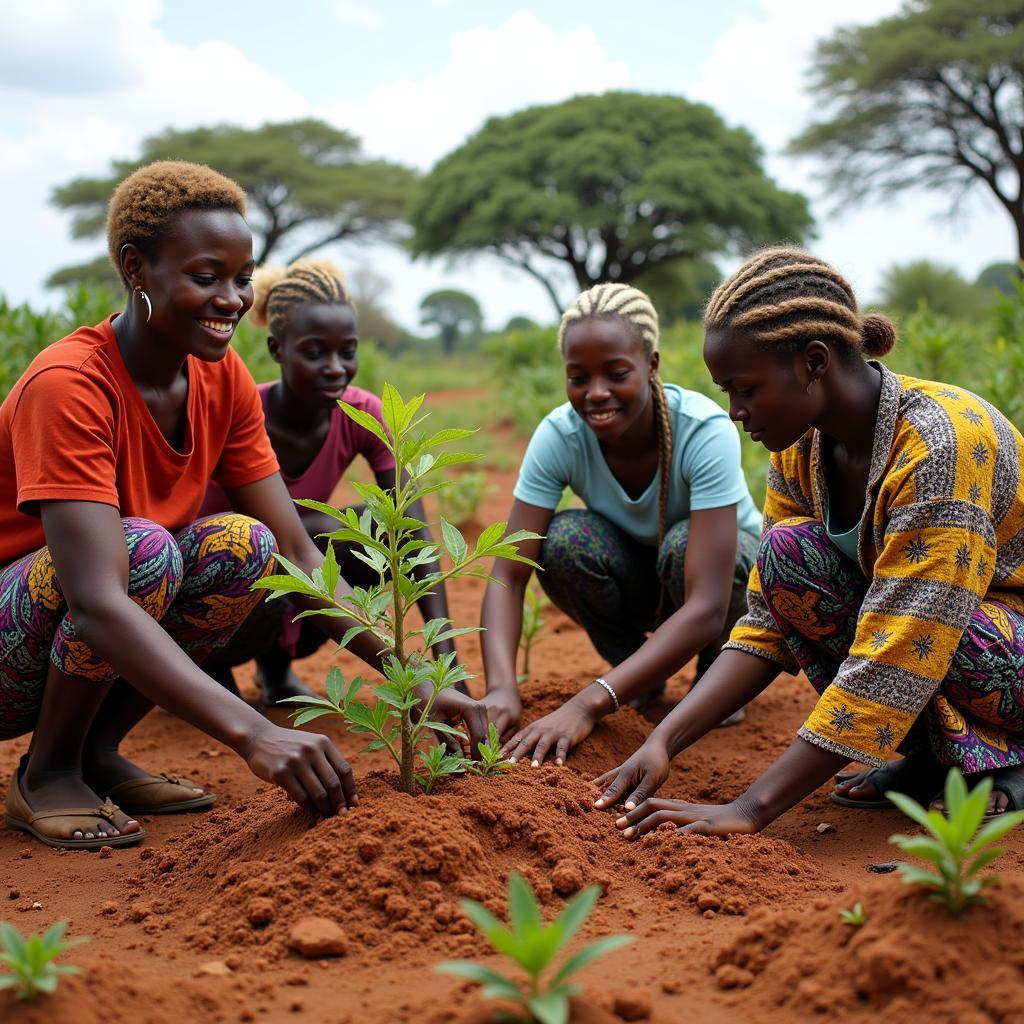 African Women Planting Acacia Seedlings
African Women Planting Acacia Seedlings
These efforts involve promoting sustainable harvesting practices, establishing protected areas, and raising awareness about the ecological and economic importance of acacias.
Conclusion: Appreciating the Legacy of Acacia: African Plants with a Future
From the vast savannas to local communities, acacias remain deeply rooted in the fabric of Africa. Their enduring presence is a testament to their adaptability, resilience, and the intricate relationship they share with both nature and humanity. As we strive for a sustainable future, appreciating and conserving these remarkable African plants is essential for preserving the continent’s biodiversity and cultural heritage for generations to come.
FAQ
1. What is the most iconic species of acacia tree in Africa?
The umbrella thorn acacia (Vachellia tortilis) is arguably the most recognizable acacia species in Africa, known for its distinctive umbrella-shaped canopy.
2. How do acacia trees survive in arid environments?
Acacias have developed various adaptations to thrive in arid conditions, such as deep root systems to access underground water, small leaves to minimize water loss, and thorns to deter herbivores.
3. Is acacia wood valuable?
Yes, acacia wood is highly valued for its strength, durability, and attractive grain patterns, making it suitable for furniture, flooring, and other applications.
4. What are the potential health benefits of acacia?
Acacia extracts have traditionally been used for their medicinal properties, with potential anti-inflammatory, antimicrobial, and wound-healing effects.
5. How can I contribute to acacia conservation?
Supporting organizations involved in acacia conservation, planting native trees, and promoting sustainable harvesting practices are some ways to contribute to their protection.
For any inquiries or assistance regarding acacia and other African plants, feel free to reach out to us. You can contact us at:
Phone Number: +255768904061
Email: kaka.mag@gmail.com
Or visit us at:
Mbarali DC Mawindi, Kangaga, Tanzania.
Our dedicated customer support team is available 24/7 to assist you.




